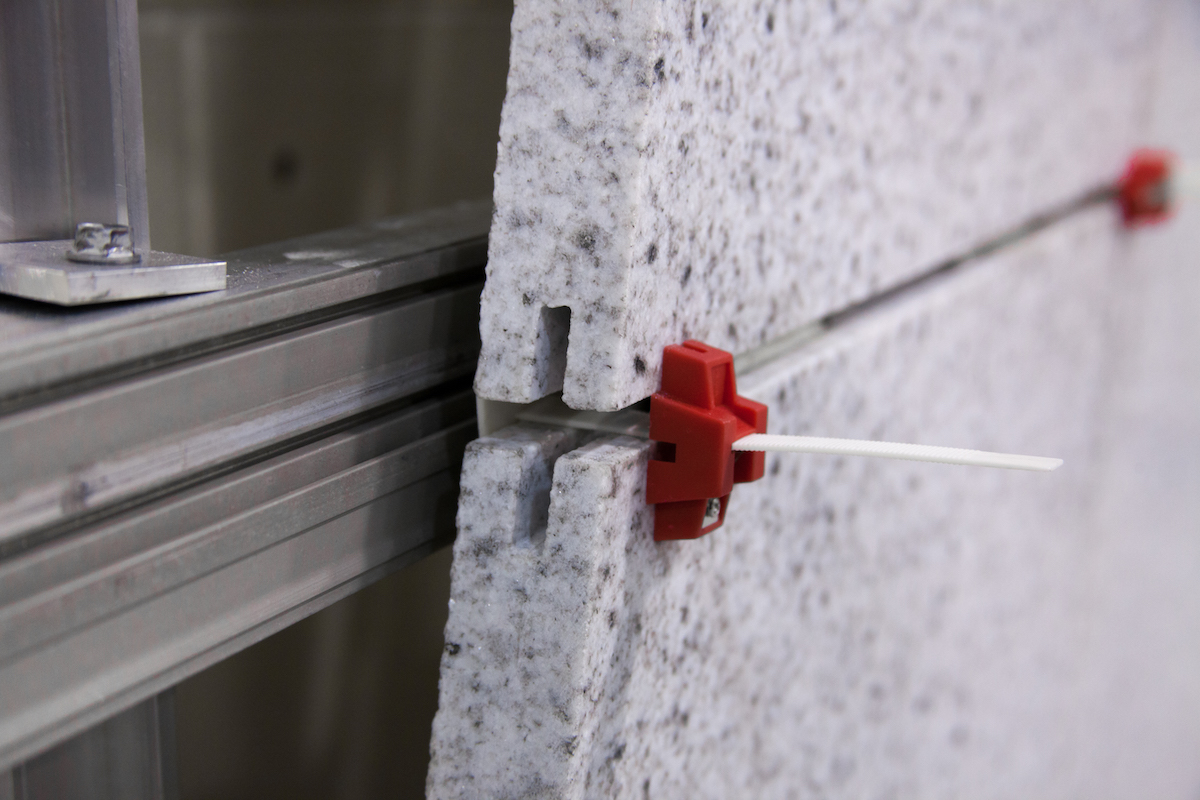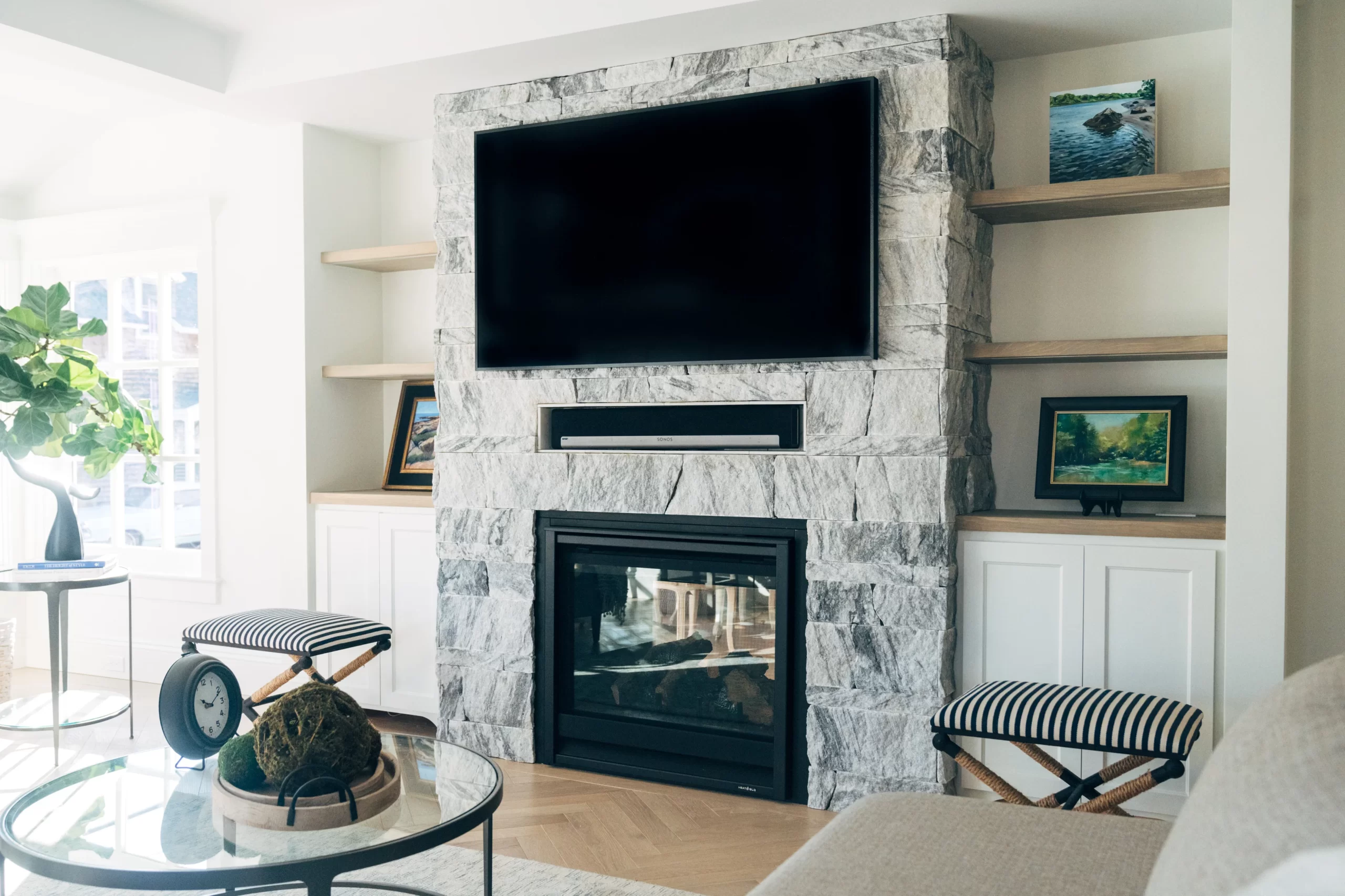Facades Systems: Characteristics and Performance of Cast Stone Vs Natural Stone
It’s essential for architects to know how the material chosen for a project will perform under a variety of conditions and circumstances. Architects are faced with many building material options, but for designs or applications that call for cladding stone, there are fundamentally two options: natural stone or cast stone – also called manufactured stone, precast stone, or manmade stone. Each of these has their own pluses and minuses. Let’s take a closer look at each.
 Toronto-Dominion Centre Building, Toronto, Canada clad in Bethel White® granite
Toronto-Dominion Centre Building, Toronto, Canada clad in Bethel White® granite
Pros and Cons of Natural Architectural Stone
Natural stone is a timeless and flexible option for many exterior applications. There’s a wide variety of natural stone types available that are beautiful, durable, and versatile: think limestone cladding, granite cladding, or marble cladding.
By being made of 100% real stone all the way through, natural stone facades, like granite cladding, resist scratching and fading. The natural color of the product is not the result of adding artificial dyes, pigments, or coloring agents. It is the minerals inside of the stone which give them their hue and pattern, so their color is consistent and preserved.

Bethel White® granite installed on Eclad facade system
Natural stone is a low-maintenance stone cladding product with a long lifespan. Many stones are durable in extreme heat and freeze/thaw conditions. If maintained properly, natural stone will last for generations.
Yes, natural stone may have a higher initial cost compared to cast stone, but it often proves to be the most cost-effective choice because of its longevity. This is especially true because natural stone is an economical long-term option, rewarding initial investment with minimal expenses for maintenance and upkeep over the course of many years.
Pros and Cons of Cast Architectural Stone
Cast stone is a man-made material fabricated from vibratory dry tamped or wet-cast methods that strive to mimic the appearance of natural, quarried stone like granite and limestone. It is typically made from Portland cement, sand, and admixtures like masonry pigments that are poured into molded forms and cured over a specified period of time to achieve proper psi strength, all in an effort to replicate the look and feel of natural stone.

Precast architectural stone elements at Southern Methodist University
Cast stone is a durable choice for exterior projects and the exposure to sunlight and the elements they must withstand. However, these manmade materials do not typically last as long as natural stone.
Cast stone is used in many of the same applications as natural stone, from simple windowsills to complex architectural elements and forms. And it’s utilized for the same types of structures as well: schools, libraries, cultural landmarks, and residential or commercial projects.
The two main draws of cast stone made from synthetic materials are that they are less expensive and are lightweight. But cast stone is not without its problems, including cracking (the most common problem), shrinkage, corrosion of reinforcing steel and other embedded structural metals that leads to spalling. Manufacturing inconsistencies are unpredictable plus, synthetic cast stone is often mass-produced and repetitive, meaning that you’re likely to find identical pieces, unlike the unique appearance and nuance of natural stone.

Cast stone can satisfy most production specifications with considerable color and range control. There are inconsistencies from manufacturer to manufacturer, and there’s a bigger carbon footprint (more on that below).
A Look at Sustainability
Natural stone is the original green building material. It is made by the earth and for the earth and doesn’t require other materials to make it like dyes, cement, and chemicals used in the manufacturing of precast, engineered stones. No other resources are required to create it, it comes to us ready-made by Mother Nature herself.

Natural stone is also four times more durable, consumes 60% less energy, and has two times less carbon emissions compared to manufactured stone. It’s 100% recyclable, plus, using natural stone can qualify projects to earn LEED credits.

Cement, a key ingredient of cast stone veneer, accounts for about 8% of global CO2 emissions and is the second-largest industrial emitter of CO2 after the iron and steel industry. The cement production process is responsible for 95% of concrete’s carbon footprint. On average, for every ton of cement produced a total of 0.9 tons of CO2 are emitted. This, combined with its widespread use, makes concrete one of the largest sources of greenhouse gas emissions in the construction industry.
Plus, most cast stone products have a high embodied energy because they require a wide range of other material ingredients and energy-intensive processes to be manufactured.
Appearance
Cast stone is designed to mimic the look and feel of natural stone. It’s made with artificial coloring agents that can fade over time with sun exposure, giving it a mottled look. Natural stone, like limestone wall cladding stones, on the other hand, age like a fine wine and wears better over time. And the natural stone facade textures and homogeneous finishes just can’t be replicated with manmade materials.

Left: Saint Clair™ Fleuri marble natural stone balusters. Right: Cast stone balusters.
Strength
Cast stone typically requires supportive rods such as rebar, which can rust and be affected by alkali silica reactions, and should not be used for structural support. Natural stone is exceptionally strong, with an even higher density found in granites which are typically 17,000 psi, whereas precast is around 5,000 psi, making natural stone well-suited for both cladding and structural applications.

Rebar embedded into molds provide support where necessary. Anything over 24″ in length typically has rods.
Cost
Cast stone will reduce building costs in the short term, but maintenance costs can accumulate. Natural stone has a larger initial cost, but because it’s virtually maintenance-free, it has long-term savings. With cost an influential factor on architects’ purchasing decisions, cast stone has grown in popularity.
Architects choose stone façades for aesthetics, durability, performance, maintenance, energy efficiency, and sustainability. It is important to understand how natural stone compares to alternatives to be able to select the material that will perform the best.

Indiana Limestone – Standard Buff™ possesses a proven track record of performance evidenced by projects that have been installed for over 150 years that still preserve their details.
Here at Polycor, we can assist in the development of architect’s specifications to value engineer projects since we own our own quarries, we perform all the extraction, manufacturing, and transformation in-house. We know how many stone panels can be yielded from certain sized blocks that we extract; we can help in advising on the finished panel sizes that should be spec’d out for projects to best use the full amount of a block and help keep costs within budget.
We work together with architects and the facade system manufacturers and installers together, to make sure that the stones that are sampled and written into a specification early in the plans are carried through to the final delivery and installation of the product. So, if your project requires ultra modern exterior stone cladding or something more traditional, either way Polycor can ensure that the design intent is preserved.
Many types of natural stone make for excellent cladding materials. Polycor natural stones are compatible with a variety of systems including:
HANDSET FACADES: Full Bed Veneer, Adhered Thin Veneer, Anchored Veneer
UNITIZED SYSTEMS: Curtainwall, Stone Faced Precast, UHPC Steel Truss System
GRID SYSTEMS: Veneer Rainscreen, Carbon Fiber Reinforced Panels. Honeycomb Panels
Meaning that the possibilities for natural stone facade building cladding options are virtually endless.




